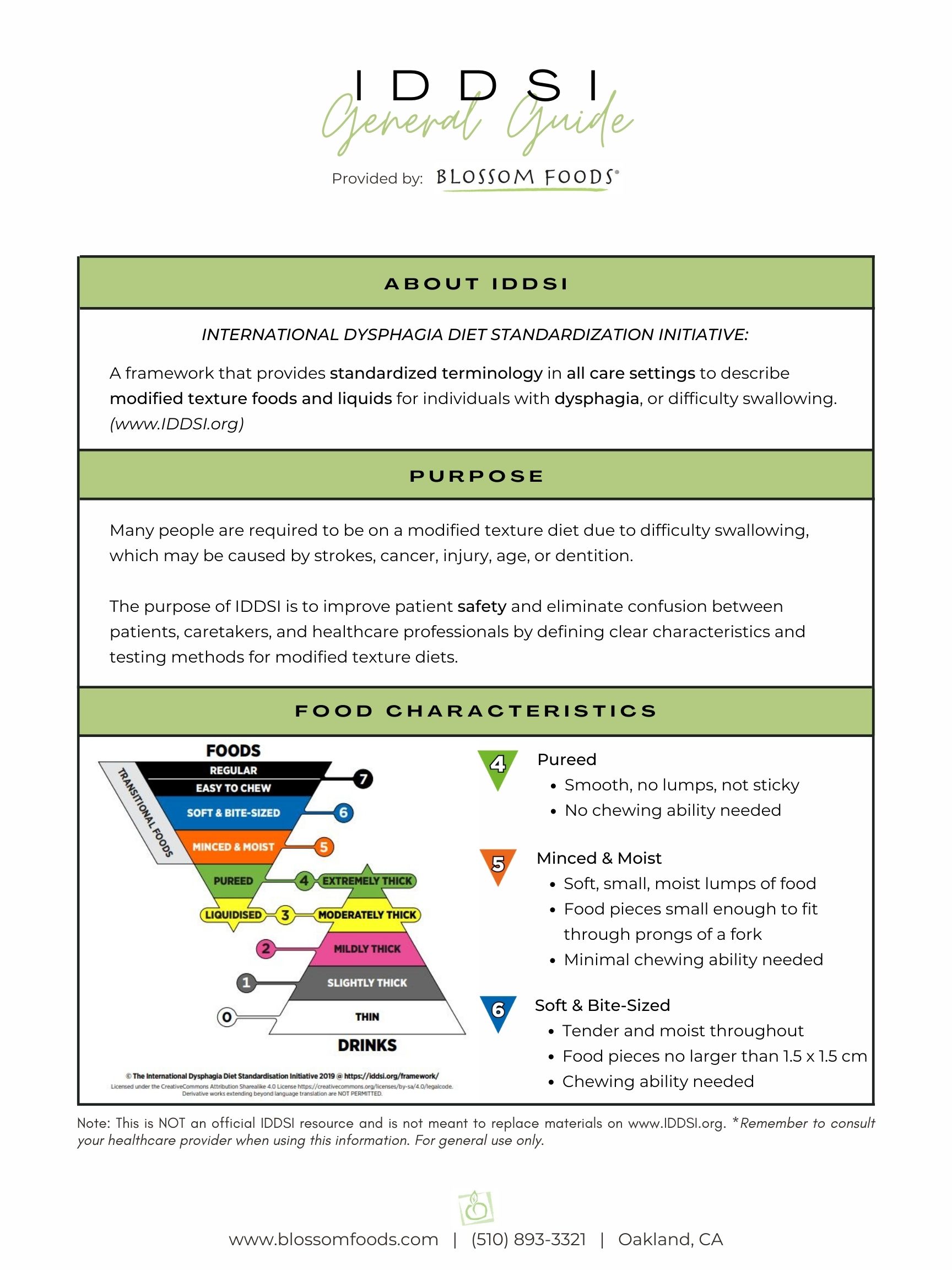Blossom Foods Education Advancement Team (EAT) Presents: IDDSI General Guide

Hello All!
Thank you for checking out the first installment of our education series. As we've said before, we want to present IDDSI, dysphagia, and nutrition in an approachable, easy-to-understand way. But first thing's first: What is IDDSI and what does it mean for healthcare institutions and individuals alike?
IDDSI (International Dysphagia Diet Standardization Initiative) is a framework that provides standard descriptions of modified texture foods and liquids for those with dysphagia, or difficulty swallowing. Its intention is to be used globally and across all care settings, so whether you are a patient in a hospital in the United States or a healthcare provider across the world, the criteria for modified texture diets will remain the same.
Serving foods that are inconsistent in texture may cause severe safety hazards for a person who already has difficulty swallowing. For that reason, IDDSI created official terms, numbers, and colors that correspond with food and drink levels, as seen in the graphic above. When coupled with physical food and drink descriptions, these characteristics are especially valuable in minimizing confusion between the patient, caretakers, and healthcare professionals and improving patient safety.
We know complying with IDDSI’s guidelines may make food production more time consuming and challenging. To make that simpler, our team has taken to specializing in IDDSI food levels 4 (Pureed), 5 (Minced & Moist), 6 (Soft & Bite-Sized) and 7 (Regular – offered in Renal Meals only).
Generally, pureed foods are smooth throughout, able to sit in a mound atop a spoon or fork, cannot be drunk through a straw, and should fall off a spoon when tilted. Minced and moist foods are soft enough for the tongue to mash and whose pieces are small enough to fit through the prongs of a standard fork. Soft and bite-sized food pieces are no wider than the width of a fork, are tender and easily mashed with a fork, and require some chewing ability. Each of these levels requires a different level of chewing and swallowing ability and are best used under the direction of a healthcare professional. For a full description of each level and more information on IDDSI, visit www.IDDSI.org.
Check back soon for more posts! We will soon dive into IDDSI testing methods, fundamentals of dysphagia, and even some tips on home preparation. Stay tuned while we continue testing and tasting!
Published: 02/23/2021 10:13 AM
